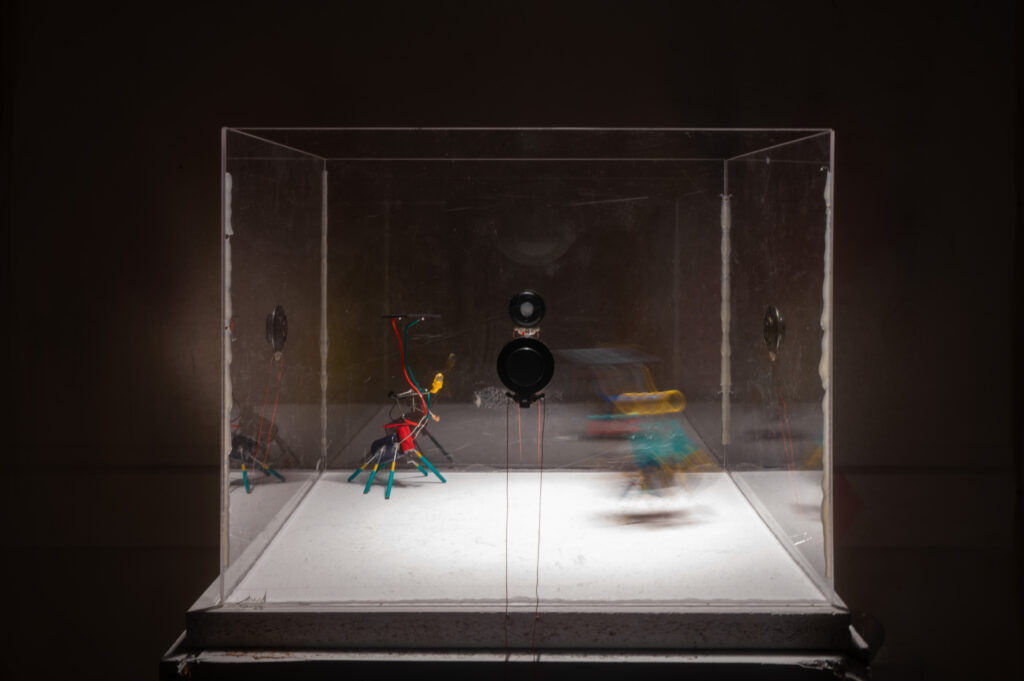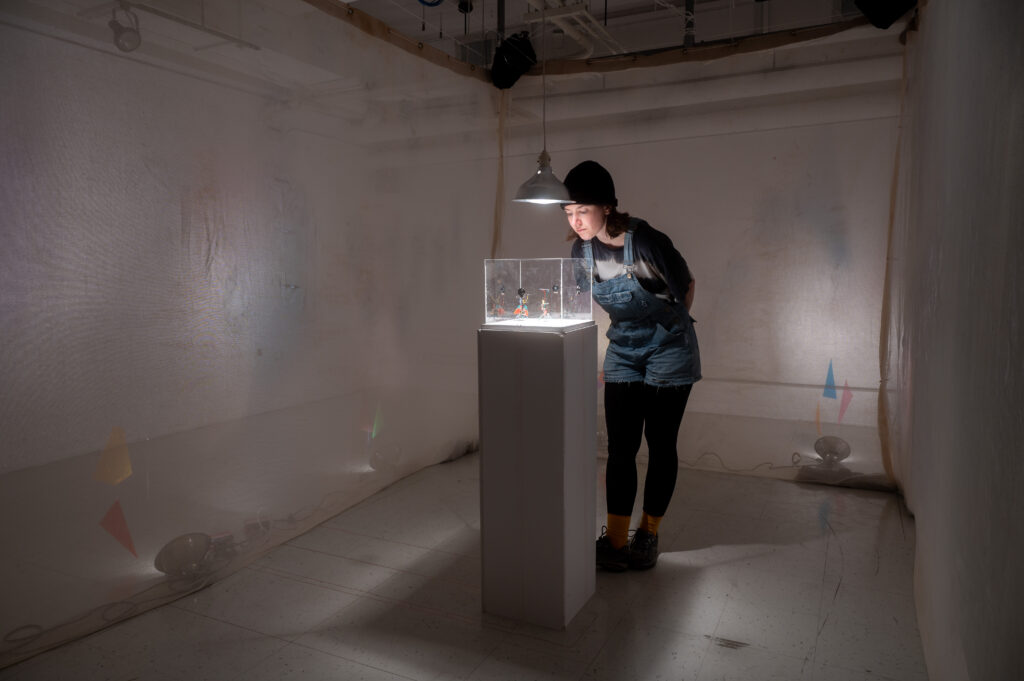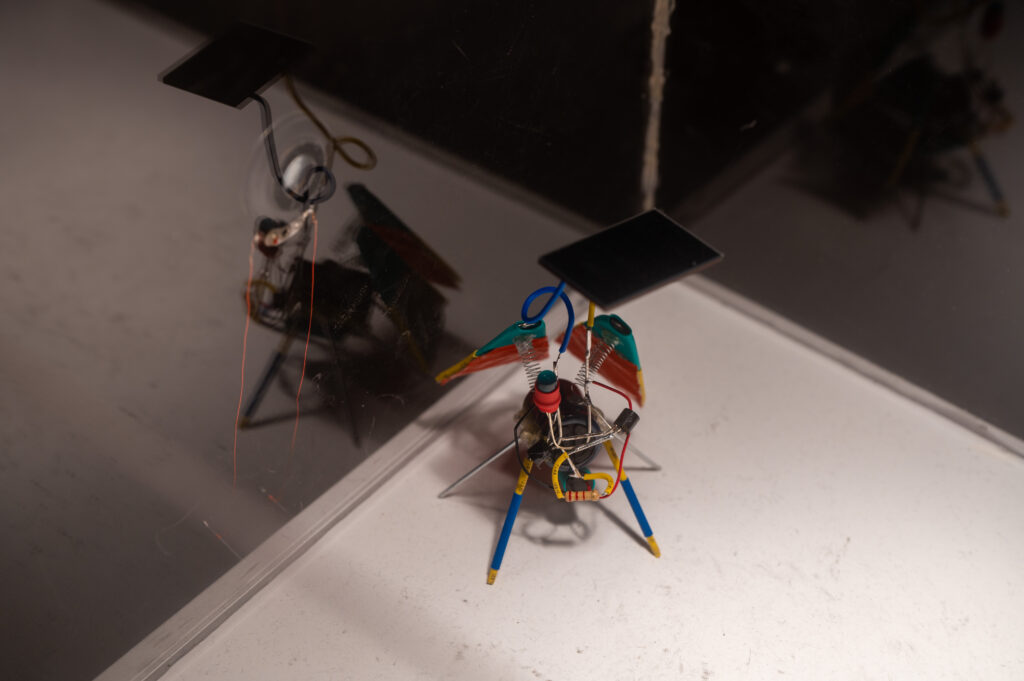Sentient Commodity (2022) – In-situ immersive environment

Sentient Commodity is an installation addressing issues of interspecies relationships in the context of captivity. The title is borrowed from Dr. Rhoda Wilkie and illustrates the shifting character of nonhuman beings’ status in respect to human affectiveness. While captivity is normalized in many situations (zoos, livestock, pets, etc.), it raises ethical concerns linked to ideas of freedom, oppression and speciesism. The matter is further complicated by the disparity of empathetic human responses to different kinds of living entities.
This work creates an immersive environment in which visitors can experience two different states of being: the observer and the captive. Small robotic beings are displayed at the centre of a room, moving, but not outside of their designated space. An inviting ambiance suggests wildlife and forest but is reminiscent of the artificiality of zoos. In time, the installation shifts to another state that now appears closed, oppressive and bleak. It displaces the visitor from their previous comfortable position to one that is frightful, captive.
As the world faces an outrageous number of challenges and conflicts, where can we focus in order to effect change? Kinship is one thing that has been widely discussed by the likes of Donna Haraway and practiced by many Indigenous peoples for millennia(1). The capacity to relate or feel empathy towards others is a key component to true coexistence. Differentiated moral considerations for distinct species (or social stratums) link to supremacy of certain groups over others. This hierarchical structure has a variety of consequences from racism to sexism and from climate change(2) to war. By directing our attention to nonhumans ethics, we can encompass phenomena that could help deal with these issues. As Kelly Oliver asks: Can we find a way of relating to others, whether or not they are like us, without excluding them on the basis of what makes them different or unique?(3)
(1) Lewis, J. E., Arista, N., Pechawis, A., & Kite, S. (2018). Making Kin with the Machines. Journal of Design and Science. https://doi.org/10.21428/bfafd97b
(2) Grudin, T. (2020, September 24). How White Supremacy Caused the Climate Crisis. Earth Island Journal. https://www.earthisland.org/journal/index.php/articles/entry/how-white-supremacy-caused-the-climate-crisis/
(3) Oliver, K. (2010). Animal Ethics: Toward an Ethics of Responsiveness. Research in Phenomenology, 40(2), 267–280. https://doi.org/10.1163/156916410×509959



Photos : Carlos Riobo
EXTRA >> BEAMbot Making Guide